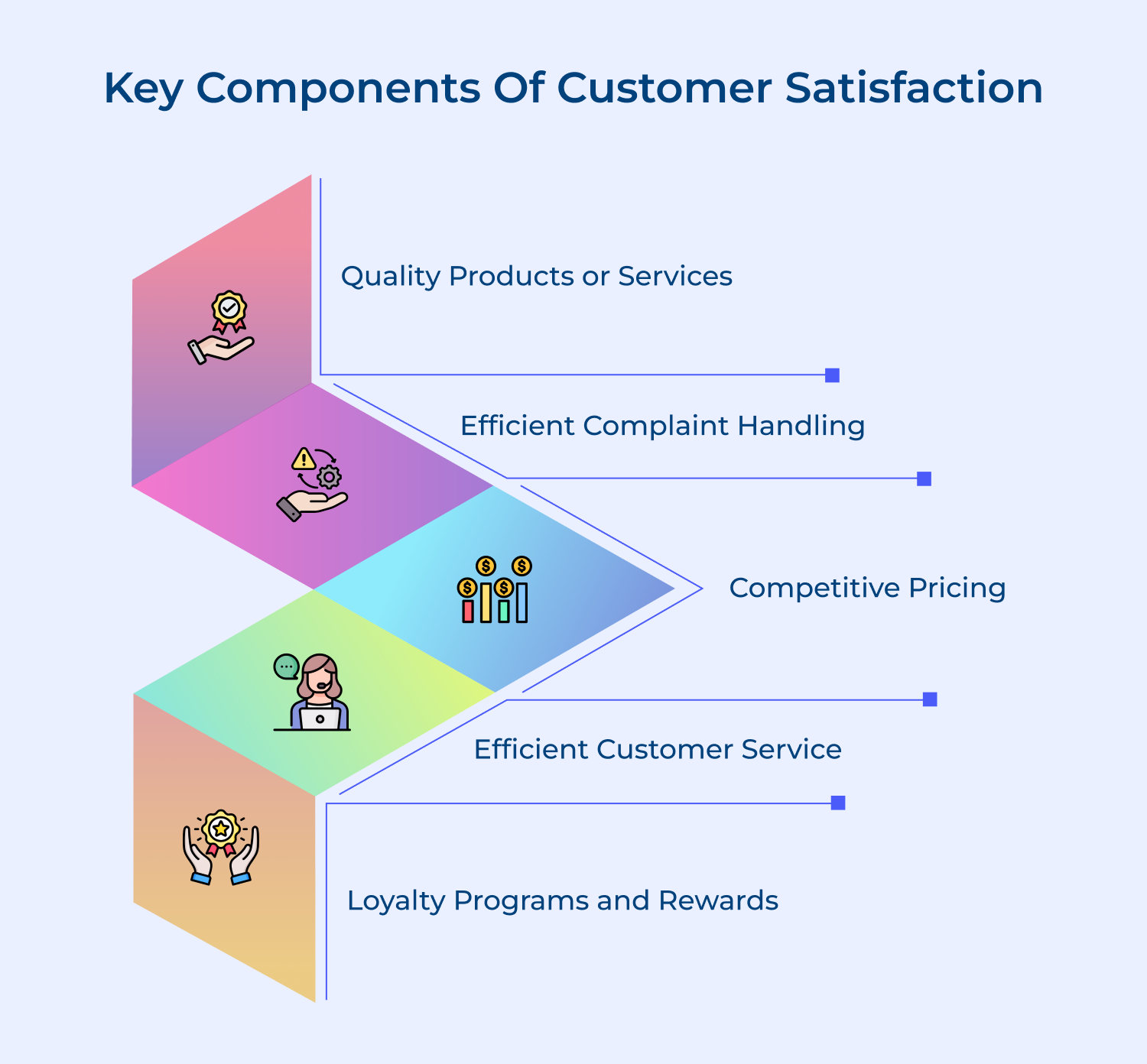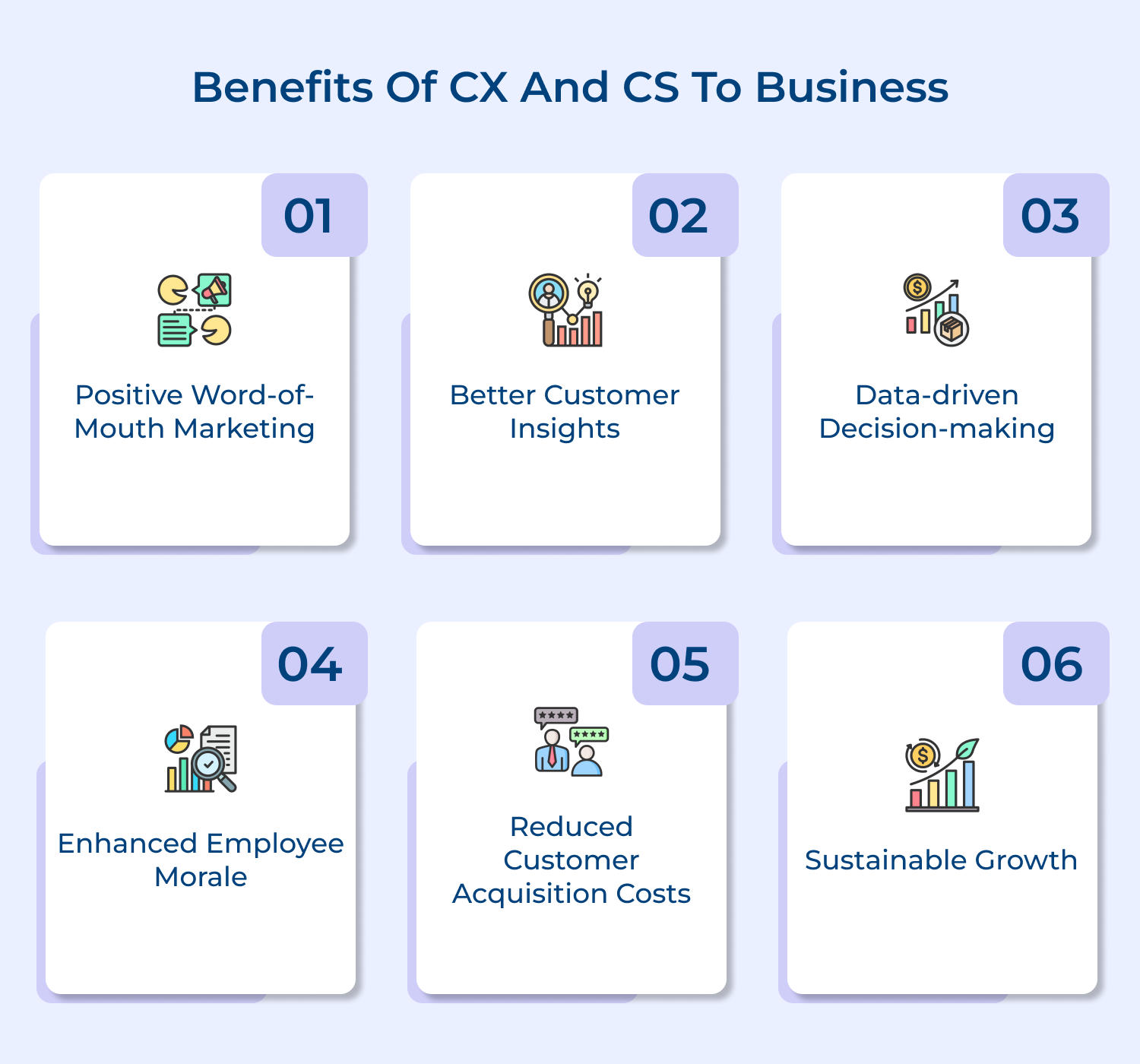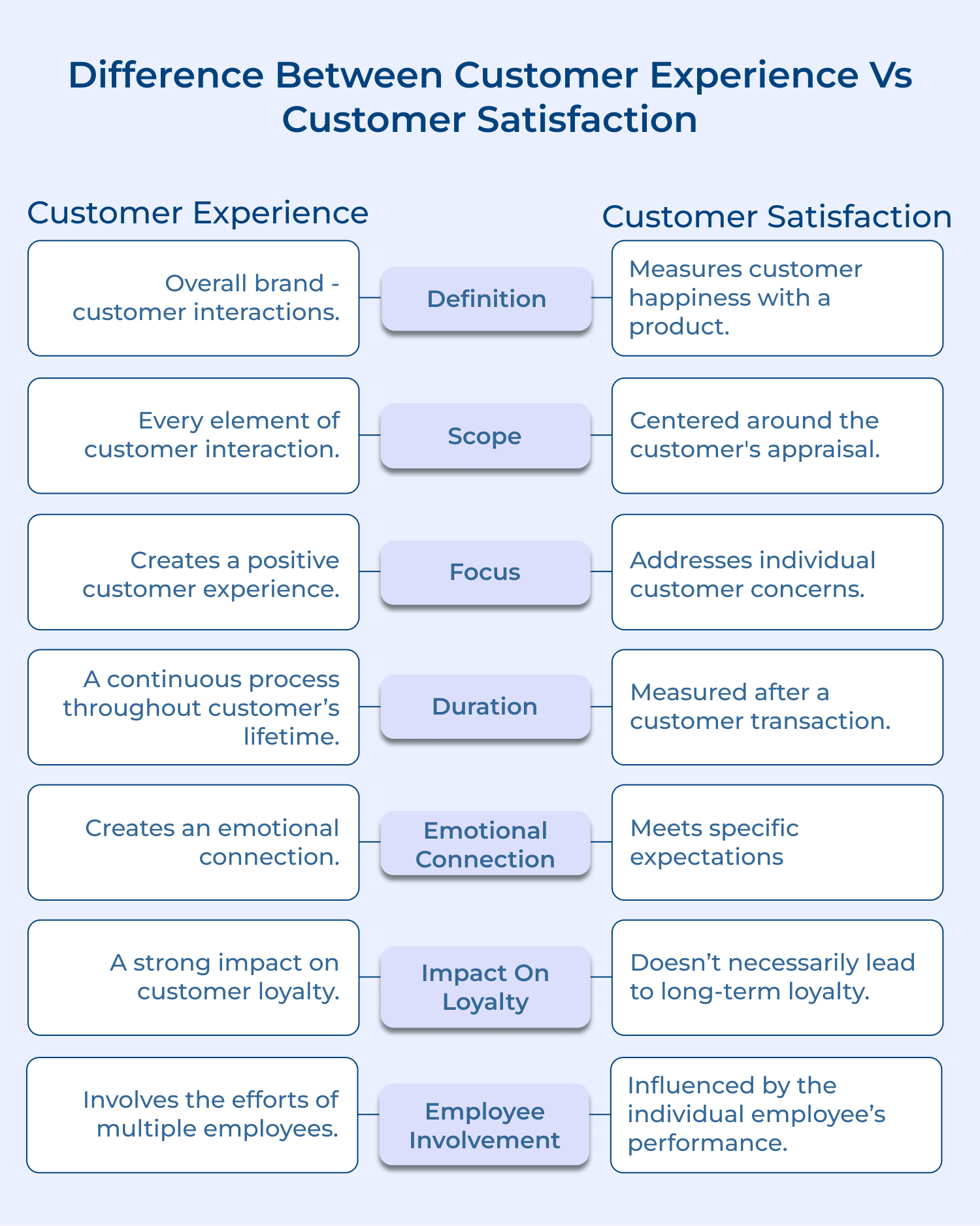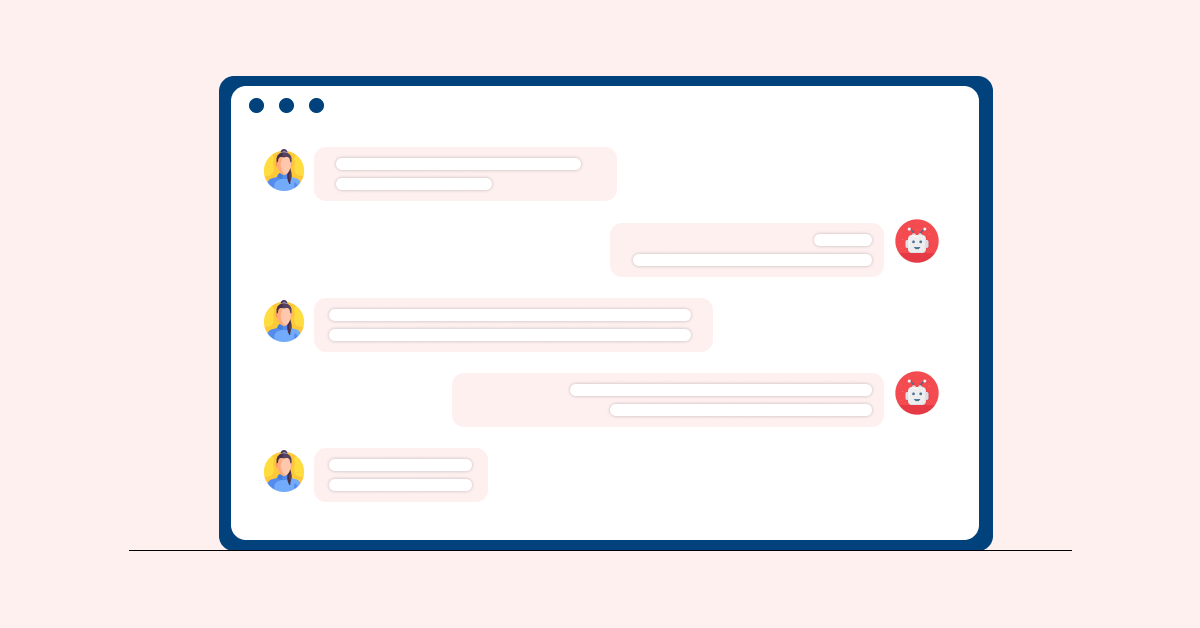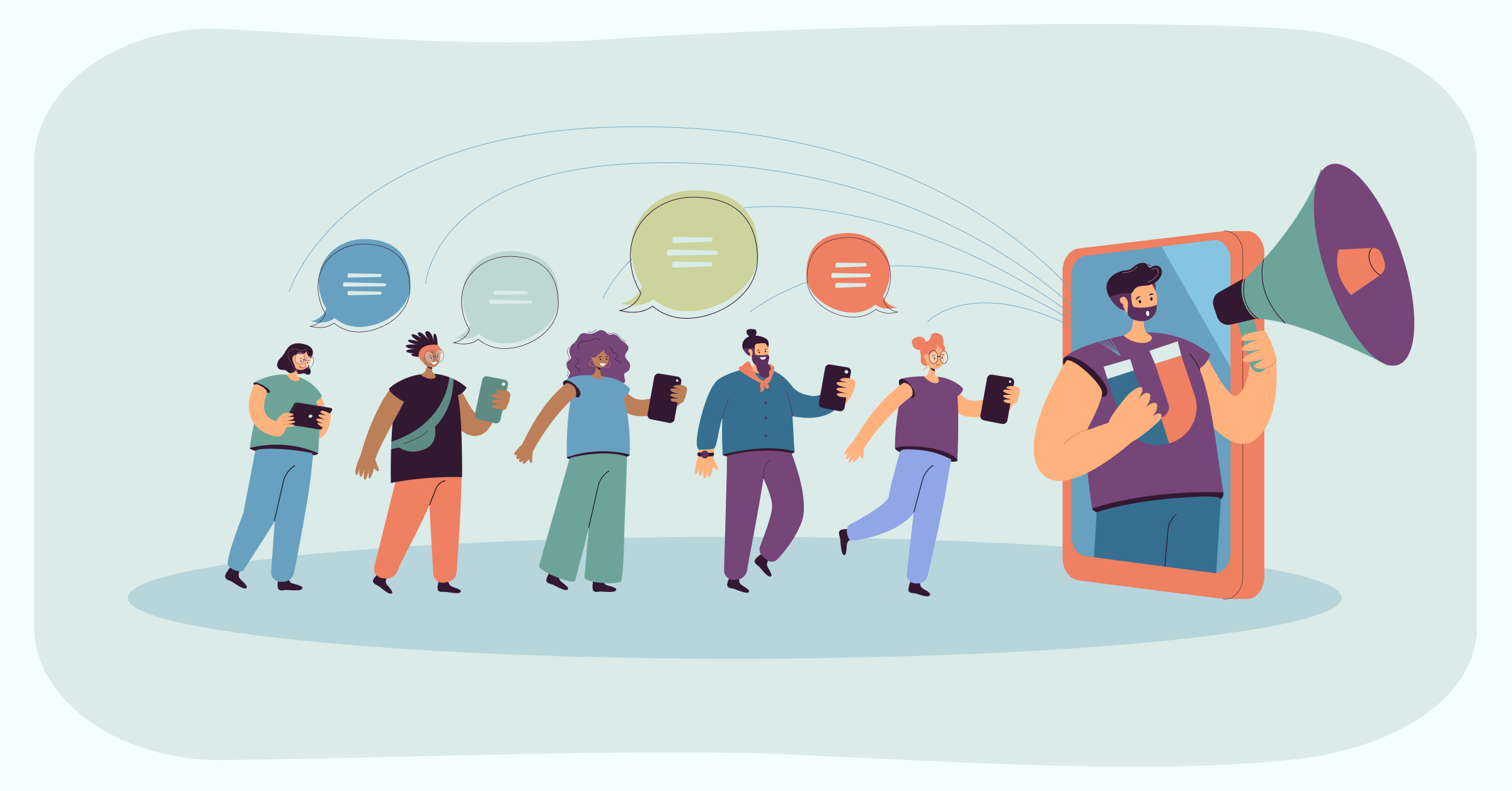Customer experience refers to the overall interactions and perceptions a customer has with a brand throughout their journey. It encompasses every touchpoint, from the moment they first hear about a company to the post-purchase support they receive. However, customer satisfaction is a more specific measure of how happy a customer is with a particular product or service.
Customer experience is a broader concept that considers various elements of a customer’s interaction with a company such as branding, advertising, customer service and product quality. Customer satisfaction is more specific and centered around the customer’s appraisal of a specific transaction or interaction.
Customer experience requires a company-wide commitment to creating a positive experience for customers. It involves collaboration across departments and a focus on understanding as well as meeting customer needs. Customer satisfaction often falls within the realm of customer service and focuses primarily on addressing individual customer concerns or issues.
Customer experience is a continuous process that occurs throughout the entire customer journey. It involves every interaction, from the initial awareness stage to the post-purchase support. Customer satisfaction is momentary and is generally measured after a customer has completed a specific transaction.
Customer experience often involves creating an emotional connection with customers. By providing personalized experiences tailored to their needs, businesses can evoke positive emotions and establish stronger relationships. Customer satisfaction is more about meeting specific expectations and ensuring that customers are content with their purchase.
Measuring customer experience requires a combination of qualitative and quantitative methods. Surveys, feedback forms and customer journey mapping are commonly used to gauge the overall experience. On the flip side, customer satisfaction can be measured through simple surveys or post-purchase feedback.
Positive customer experiences have a strong impact on customer loyalty. When customers have a positive overall perception of a brand, they are more likely to become repeat customers and recommend the brand to others. Customer satisfaction, although important, may not necessarily lead to long-term loyalty.
Creating a positive customer experience often involves the efforts of multiple employees and departments within a company. It requires cross-functional collaboration and a customer-centric approach throughout the organization. Customer satisfaction on the other hand can be influenced by the performance of individual employees or specific departments.
Customer experience can be a key differentiator for businesses. By providing a superior experience, companies stand out from the competition and attract more customers. Customer satisfaction, although important may not be enough to differentiate a brand from its competitors.
Customer experience aims to exceed customer expectations by creating a memorable and seamless journey. It involves delighting customers and forming emotional connections. Customer satisfaction focuses on meeting or ideally, surpassing a customer’s basic expectations regarding a specific product or service.
Role of CX and CS in Customer Service
Combining CX and CS help businesses to create a seamless as well as exceptional customer service experience. But, how do they help you elevate customer service? Let’s dive into it.


